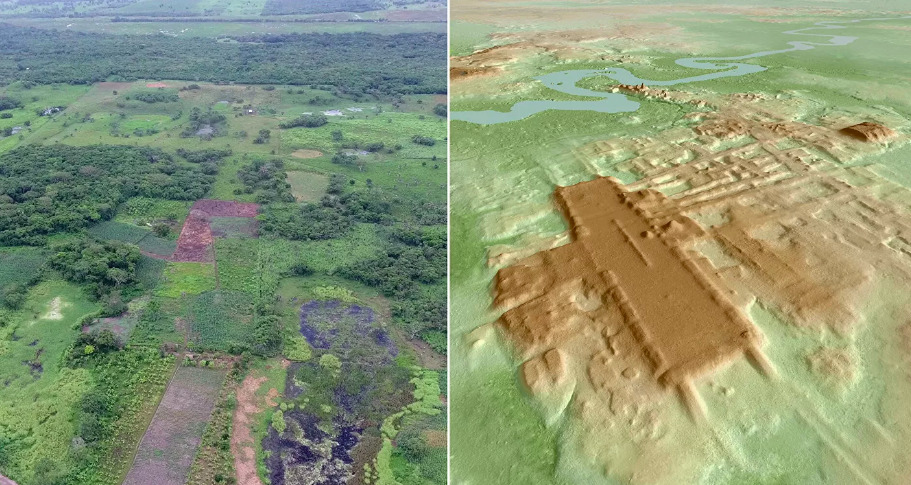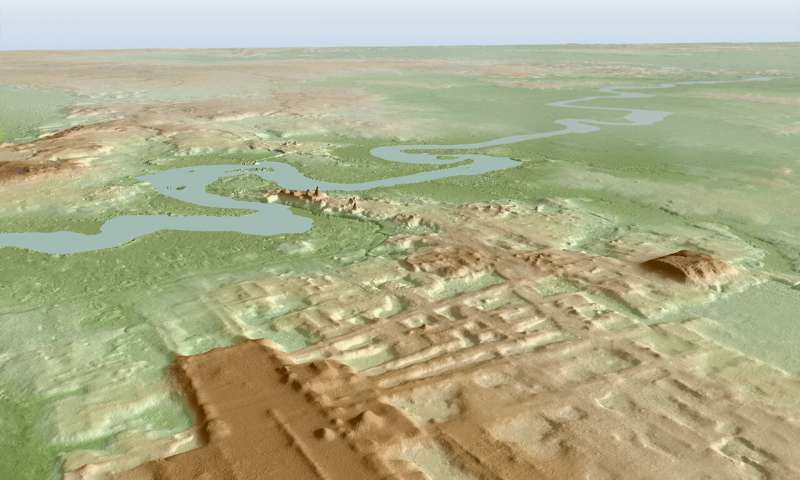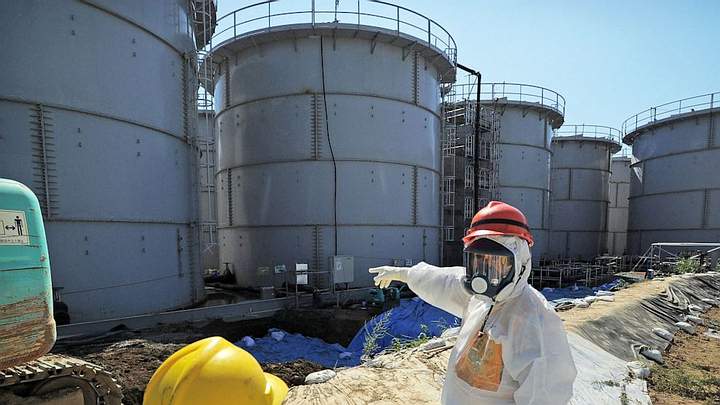From the ground, it is impossible to say that the plateau underfoot is something extraordinary. But from the sky, with laser eyes, and below the surface, with radiocarbon dating, it is clear that it is the largest and oldest Mayan monument ever discovered.
Located in Tabasco, Mexico, near the northwest border of Guatemala, the newly discovered site of Aguada Fénix was hidden under the surface, hidden by its size and low profile until 2017. The monument measures about 1,400 meters in length, ranging from 9 to 15 meters high and includes nine wide sidewalks.
The monument was discovered by an international team led by professors from the University of Arizona at the School of Anthropology Takeshi Inomata and Daniela Triadan, with the support of the university’s Agnese Nelms Haury program and under the authorization of the National Institute of Anthropology and History of Mexico.
They used LIDAR technology – or light detection and range -, which uses laser-emitting equipment from an airplane. The laser rays penetrate the canopy of the trees, and their reflections on the surface of the soil reveal the three-dimensional forms of archaeological features. The team then excavated the site and 69 samples of coal with a radiocarbon date to determine that it was built sometime between 1,000 and 800 BC Until now, the Mayan site of Ceibal, built in 950 BC, was the oldest confirmed ceremonial center. This oldest monumental building in Aguada Fénix turned out to be the largest known in all of Mayan history, far exceeding the pyramids and palaces of later periods.
After excavating, the researchers found that the structure is surrounded by smaller “platforms”, dams and reservoirs, in addition, nine roads led to it. What is especially surprising, the Aguada Fénix could be seen only from the air:
if you look at it while on the ground, it will seem that you are just climbing a hill.
“With the low-resolution lidar provided to us by the Mexican government, we noticed this huge platform. Then we took the high-resolution lidar – and confirmed the presence of this large building. People live in this area, this is not the jungle, but the Aguada Fénix section was not found because it is flat and huge and without lidar looks like a natural landscape,” said Takeshi Inomata from Arizona University.

The authors of the study suggest that the construction of the Aguada Fénix was a difficult task, in which thousands of people participated. However, there is no evidence that they were forced to build. Scientists suggest that the platform was built by half-nomads who lived in this area and worked together.
“It seems that the design itself is a communal open space,” experts say.
The absence of any stone statues dedicated to them speaks in favor of the fact that the Aguada Fénix was not built for representatives of the ruling class. The fact that the Mayans built monumental buildings earlier than we thought before, even at a time when social inequality was not so significant, makes archaeologists rethink many previous studies.
The team’s findings were published in the journal Nature…

















